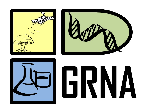Banca de DEFESA: ANDRESSA LEMOS ROCHA
Uma banca de DEFESA de MESTRADO foi cadastrada pelo programa.STUDENT : ANDRESSA LEMOS ROCHA
DATE: 03/04/2023
TIME: 14:00
LOCAL: https://meet.google.com/ewr-ciip-auw
TITLE:
Morphological characterization of sweet cassava varieties market in Santarém region - PARÁ
KEY WORDS:
Crop cassava. Varietal characterization. Ethnovarieties.
PAGES: 55
BIG AREA: Outra
AREA: Ciências Ambientais
SUMMARY:
Cassava (Manihot esculenta) has wide genetic variability and wide distribution. Thus, the objective of this work was to characterize the commercial and productive profile of the stallholders and the varieties of cassava sold in the free fairs of the municipality of Santarém, in the State of Pará. Data were collected at the Mercadão 2000 fairs, the Cohab Fair, the Aeroporto Velho Fair and the Emater Organic Fair, through the application of a follower. The morphological characterization was based on the descriptors proposed by Fukuda and Guevara (1998). The data obtained were transformed into a similarity matrix, treated through the Jaccard similarity index. The dendrogram was obtained through the UPGMA method (Unweighted Pair Group Method using Arithmetic averages) to visualize the relationships between the Examples with 500 resampling by bootstrap. Data were tabulated and organized into type of descriptor, class and frequency. In addition, the entropy level of the characters (H) proposed by Renyi (1961) was used to assist in the selection of the most important descriptors for the characterization. The number of cassava sellers was different in four sampled locations, 7 at Mercadão 2000, 6 at Cohab, 5 at Aeroporto Velho and 2 at the Emater fair, in a total of 20 stallholders. In all, 6 different varieties were identified by producers at all fairs, and on average, each producer has 1.85 different varieties, ranging from 1 to 4 varieties. The white and manteiguinha variety were the most sold by the stallholders, both with 35.9%, with 80% of the stallholders selling roots of yellow and white pulp varieties, 20% of white pulp varieties only, and none sold had yellow pulp roots. The roots remained in loco, providing important data in the characterization of cassava varieties, even among varieties popularly classified as being equal, there is variation in characteristics. With this, we can infer that of the 13 persistent varieties, 3 are the same, not being enough variation and, varieties with nomenclatures related to color, tended to group together, forming groups.
COMMITTEE MEMBERS:
Presidente - 1966924 - CARLOS IVAN AGUILAR VILDOSO
Interno - 1987988 - GABRIEL IKETANI COELHO
Externa ao Programa - 1945119 - MARIA LITA PADINHA CORREA ROMANO - nullExterno à Instituição - ROGÉRIO RANGEL RODRIGUES - IFPA




